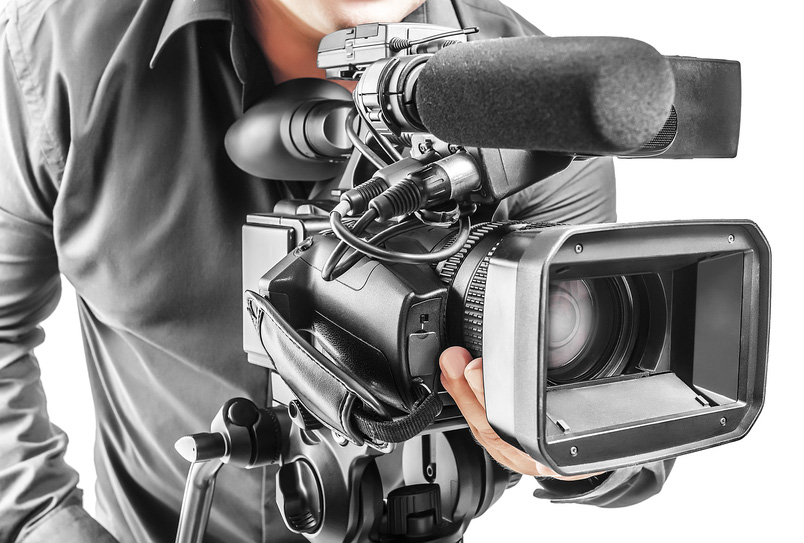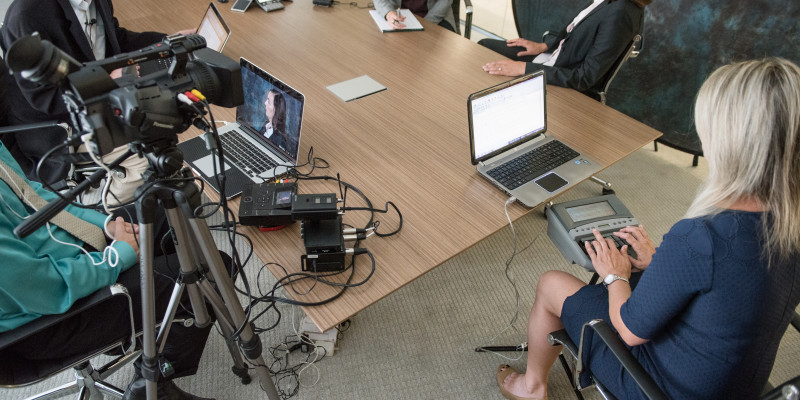The Role of Legal Videography in Modern Legal Proceedings
The Role of Legal Videography in Modern Legal Proceedings
Blog Article
Diving Into the Devices of Legal Videography: Unveiling Its Procedure in Safeguarding Authentic Aesthetic Testimony for Judicial Procedures
In the world of judicial procedures, the duty of lawful videography stands as a foundation in maintaining and providing aesthetic proof. As technology proceeds to advance, the systems behind lawful videography have ended up being significantly detailed, providing an essential layer of authenticity to testimonies caught on video.
Historical Evolution of Legal Videography
Examining the historic progression of lawful videography discloses a considerable makeover in the recording and discussion of visual evidence within the lawful landscape. In the past, legal proceedings greatly relied upon written pictures and transcripts to record events and offer proof. Nonetheless, with the advent of video clip modern technology, the legal market saw a paradigm change in exactly how aesthetic testament was captured and presented.
The advancement of lawful videography can be traced back to the late 20th century when improvements in video recording equipment made it a lot more obtainable for use in courtrooms. This technical innovation not just boosted the accuracy and integrity of aesthetic evidence yet likewise reinvented the means situations were provided to juries and courts (Legal Videography). Lawyers began to identify the persuasive power of video recordings in communicating feelings, subtleties, and non-verbal cues that created records or photographs alone can not catch efficiently

Innovation Improvements in Video Documents
What key technological advancements have transformed video clip documents in the lawful area? The legal area has actually seen considerable improvements in video documentation technology that have boosted the credibility and integrity of aesthetic proof in judicial procedures. One of the key improvements is high-def (HD) video recording capacities, which offer crystal-clear pictures and sharp details that are essential for accurately catching testimonies, faces, and various other visual hints. Additionally, the integration of timestamping and metadata features in video documentation tools has actually allowed accurate paperwork of when and where the video clip was tape-recorded, making sure the integrity of the evidence offered in court.
Furthermore, innovations in video clip encryption and watermarking modern technologies have reinforced the safety and security and tamper-proof nature of video proof, securing it versus unauthorized alterations or tampering. The development of cloud storage space remedies and remote accessibility abilities has structured the storage, access, and sharing of video clip evidence, promoting seamless partnership among lawful specialists and making certain effective accessibility to crucial aesthetic statements when needed. These technological innovations in video documents have unquestionably revolutionized the lawful field, enhancing the precision, trustworthiness, and admissibility of visual evidence in judicial procedures.
Duty of Legal Videographers in Court Settings
The advancement of video clip documentation innovation in the lawful area has actually demanded a critical duty for legal videographers in court settings, ensuring the stability and integrity of aesthetic statements offered throughout judicial proceedings. Lawful videographers play a basic role in recording and preserving precise visual proof that can be crucial in lawsuit. Their obligation encompasses establishing devices, tape-recording procedures, and generating high-grade video clips that properly reflect the events in the court.
In courtroom settings, legal videographers have to comply with strict guidelines and criteria to keep the credibility of the visual record. They must possess an eager eye for detail and a comprehensive understanding of legal procedures to make sure that the footage they catch is a true representation of the occasions that took place. Additionally, legal videographers frequently work carefully with legal teams to make sure that the video evidence aligns with the situation's requirements and can be redirected here effectively offered in court to support the legal disagreements being made. On the whole, the duty of lawful videographers in court room settings is essential in promoting the principles of justice and ensuring the openness of legal proceedings.

Ensuring Admissibility and Honesty of Video Evidence
To keep the credibility of visual proof offered in legal procedures, making certain the admissibility and integrity of video clip proof is a critical obligation for legal videographers. Admissibility describes the approval of proof by the court, and for video clip evidence to be admissible, it needs to fulfill particular criteria. Legal videographers play an important function in making certain that the video clips they capture follow the policies of evidence, such as significance, credibility, and integrity.
Honesty of video clip proof includes preserving the originality and accuracy of the footage from the time check my reference it is recorded till it exists in court. This consists of firmly keeping the video files, documenting the chain of custodianship, and protecting against any kind of meddling or modifications. Legal videographers must stick to rigorous procedures to ensure the integrity of the video clip proof and prevent any kind of obstacles to its authenticity.
Future Trends in Legal Videography
Given the raising dependence on innovation in legal process, lawful videographers are poised to welcome ingenious developments forming the future of aesthetic testimony capture and discussion. Among the prominent fads imminent is the integration of digital truth (VIRTUAL REALITY) and increased reality (AR) modern technologies right into legal videography. These modern technologies have the prospective to change exactly how you can check here visual proof exists in courts, allowing courts and juries to submerse themselves in the scene of the criminal offense or case.
Moreover, using expert system (AI) formulas for video evaluation is expected to enhance the process of examining and analyzing big quantities of video footage. AI can aid in identifying crucial minutes, anomalies, and patterns within video clips, boosting the effectiveness of lawful examinations.

Conclusion
To conclude, legal videography has actually played an essential duty in offering genuine visual proof for judicial proceedings. Via technological improvements and the knowledge of lawful videographers, the integrity and admissibility of video clip evidence are guaranteed in court room settings. As lawful videography remains to develop, it will certainly be vital to maintain criteria that preserve the precision and integrity of visual statement for the future of lawful proceedings.
Taking a look at the historic progression of legal videography discloses a substantial change in the recording and discussion of aesthetic proof within the legal landscape.The development of video clip documents technology in the legal area has actually demanded an essential function for lawful videographers in court room setups, ensuring the stability and dependability of aesthetic testaments offered throughout judicial proceedings. Additionally, lawful videographers often work closely with legal teams to guarantee that the video evidence lines up with the situation's demands and can be successfully provided in court to sustain the lawful disagreements being made.To preserve the integrity of aesthetic proof provided in legal procedures, guaranteeing the admissibility and stability of video evidence is a crucial responsibility for lawful videographers. As lawful videography proceeds to progress, it will be vital to maintain requirements that maintain the accuracy and integrity of aesthetic statement for the future of legal proceedings.
Report this page